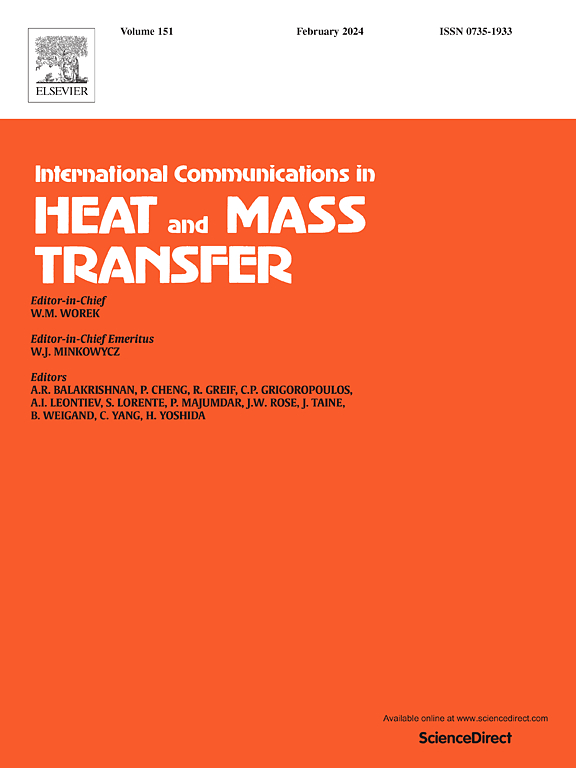用于减少超音速/超音速气流中阻力和热通量的尖顶体主动控制装置:最新技术综述
IF 6.4
2区 工程技术
Q1 MECHANICS
International Communications in Heat and Mass Transfer
Pub Date : 2024-11-12
DOI:10.1016/j.icheatmasstransfer.2024.108317
引用次数: 0
摘要
钝鼻式车身结构被广泛应用于飞行器中,以改善超音速/超音速飞行时的热量分布。然而,这种车身形状会增加冲击波阻力,因为其前部流场会产生强烈的弓形冲击波。理论和实践证明,改变前机身前流场的各种替代技术对最大限度地减少过度气动加热和更高的波阻力问题具有明显的效果。利用实验和数值方法,对包括尖头在内的几种主动控制配置及其与气动盘和喷射的组合进行了广泛研究。详细阐述了不同结构参数和自由流条件下的阻力和热量降低效果。实际上,在设计巡航和再入飞行器的最佳重量结构和热保护系统时,存在相当多的问题,其中流体-热-结构耦合问题至关重要。如机械尖顶的热和机械行为与空气动力流问题的耦合。本文旨在通过调查和总结该领域的相关研究,系统地分析尖顶及其组合的主动流场控制技术。此外,还对高速条件下遇到的耦合问题进行了系统阐述。最后,本文就未来需要进一步研究的值得注意的问题提出了展望和建议。本文章由计算机程序翻译,如有差异,请以英文原文为准。
Active control devices of spiked body for drag and heat flux reduction in supersonic/hypersonic flows: State-of-the-art review
Blunt-nose body structures are widely used in vehicles for better heat distribution due to supersonic/hypersonic flight. However, such a body shape contributes to an increase of shock wave drag owing to the strong bow shock wave generated in its front flow field. Various alternative techniques to modify the flowfield in front of the fore-bodies are theoretically and practically proved to have obvious effects on minimizing the excessive aeroheating and higher wave drag problems. A couple of active controlled configurations including spikes and their combinations with aerodisk and injection are extensively investigated utilizing experimental and numerical methods. The drag and heat reduction effects achieved with different structural parameters and freestream conditions are elaborated in detail. Actually, in the design of optimal weight structures and thermal protection systems for cruise and re-entry vehicles, there exist considerable problems in which the fluid-thermal-structural coupling problems are critical. Such as the thermal and mechanical behavior of mechanical spike coupled with the aerodynamic flow problem. The present paper is intended to systematically analyze the active flow field control technology of spikes and their combinations by surveying and summarizing the related studies in this field. Moreover, the coupling problem encountered in high speed conditions are also taken into consideration with a systematic explication. This paper concludes with outlooks and recommendations on the noteworthy issues that need further investigations in the future.
求助全文
通过发布文献求助,成功后即可免费获取论文全文。
去求助
来源期刊
CiteScore
11.00
自引率
10.00%
发文量
648
审稿时长
32 days
期刊介绍:
International Communications in Heat and Mass Transfer serves as a world forum for the rapid dissemination of new ideas, new measurement techniques, preliminary findings of ongoing investigations, discussions, and criticisms in the field of heat and mass transfer. Two types of manuscript will be considered for publication: communications (short reports of new work or discussions of work which has already been published) and summaries (abstracts of reports, theses or manuscripts which are too long for publication in full). Together with its companion publication, International Journal of Heat and Mass Transfer, with which it shares the same Board of Editors, this journal is read by research workers and engineers throughout the world.

 求助内容:
求助内容: 应助结果提醒方式:
应助结果提醒方式:


